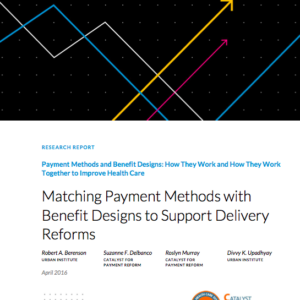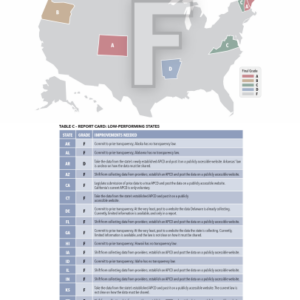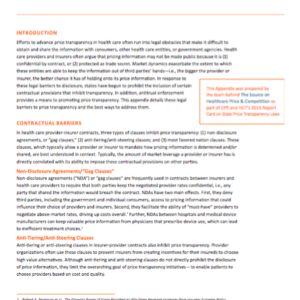Showing 37–45 of 62 results
-

Webinar: Behavioral Health – Understanding Costs and Reframing Solutions
Listen to this webinar to hear about new strategies that employers are exploring to address rising costs and improve care in the behavioral health arena.$39.00 Buy -

Intro to Payment Reform
The traditional method for paying doctors and hospitals--fee-for-service--creates incentives for them to provide care, and sometimes, more than their patients need. Payment reform, which ties providers' payments to their performance on quality measures, attempts to mitigate the incentive to overprescribe care. Learn about this and why employers and other health care purchasers should care.$0.00 -

Pairing Payment Reforms and Benefit Design
If you know the basics of payment reform and benefit design, you should start to think about how incentives on the provider side and the consumer side can work together to improve how care is delivered. Check out this Get Started Brief to start thinking about how to align these incentives.$0.00 -

Get Started with Aligned Sourcing
When employers and other health care purchasers try to push the market to make it function in a better way, they have a better chance when they send consistent signals to their health plans. Learn more about why aligned sourcing is important and what tools purchasers can use to move the market.$0.00 -

Telehealth
Telehealth allows patients to interact with the doctors without going into the provider's office. Telehealth is a low-cost and high-value health benefit offering that purchasers are incorporating into their employee benefits across the country. Learn more about telehealth and its potential value for health care purchasers.$0.00 -

Specialty Pharmacy
Specialty pharmaceuticals are extremely high-cost medications, which are the fastest growing sector of pharmacy spending today. Learn more about these high cost drugs and strategies that stakeholders can look to in an attempt to curb the high costs of specialty pharmaceuticals.$0.00 -

2016 Matching Payment Methods with Benefit Designs to Support Delivery Reforms
With the support of the Robert Wood Johnson Foundation, CPR teamed up with the Urban Institute to explore how established and proposed payment methods and benefit design options work. This section of the project focuses on how payment methods and benefit designs can be used to align incentives between providers and consumers to support delivery reforms, including "focused factories", accountable care organizations, and patient-centered medical homes.$0.00 Download -

2016 Report Card on State Price Transparency Laws
Catalyst for Payment Reform (CPR) and the Health Care Incentives Improvement Institute (HCI3) released a 2016 Report Card on State Price Transparency Laws, which grades states on making health care price and quality information available to consumers. Download the report to find out your state’s grade.$0.00 Download -

2015 Legal Brief on Popular Arguments Against Price Transparency
An addendum to CPR and HCI3 ’s 2015 Report Card on State Price Transparency Laws, this brief outlines the legal arguments commonly used to explain the lack of transparency in the health care system and what states can do to overcome them.$0.00 Download
